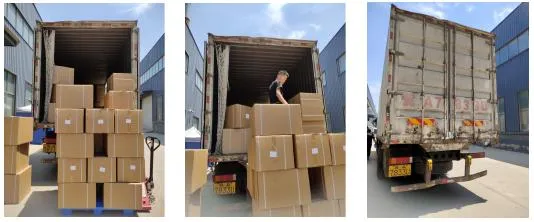
-
 Afrikaans
Afrikaans -
 Albanian
Albanian -
 Amharic
Amharic -
 Arabic
Arabic -
 Armenian
Armenian -
 Azerbaijani
Azerbaijani -
 Basque
Basque -
 Belarusian
Belarusian -
 Bengali
Bengali -
 Bosnian
Bosnian -
 Bulgarian
Bulgarian -
 Catalan
Catalan -
 Cebuano
Cebuano -
 Corsican
Corsican -
 Croatian
Croatian -
 Czech
Czech -
 Danish
Danish -
 Dutch
Dutch -
 English
English -
 Esperanto
Esperanto -
 Estonian
Estonian -
 Finnish
Finnish -
 French
French -
 Frisian
Frisian -
 Galician
Galician -
 Georgian
Georgian -
 German
German -
 Greek
Greek -
 Gujarati
Gujarati -
 Haitian Creole
Haitian Creole -
 hausa
hausa -
 hawaiian
hawaiian -
 Hebrew
Hebrew -
 Hindi
Hindi -
 Miao
Miao -
 Hungarian
Hungarian -
 Icelandic
Icelandic -
 igbo
igbo -
 Indonesian
Indonesian -
 irish
irish -
 Italian
Italian -
 Japanese
Japanese -
 Javanese
Javanese -
 Kannada
Kannada -
 kazakh
kazakh -
 Khmer
Khmer -
 Rwandese
Rwandese -
 Korean
Korean -
 Kurdish
Kurdish -
 Kyrgyz
Kyrgyz -
 Lao
Lao -
 Latin
Latin -
 Latvian
Latvian -
 Lithuanian
Lithuanian -
 Luxembourgish
Luxembourgish -
 Macedonian
Macedonian -
 Malgashi
Malgashi -
 Malay
Malay -
 Malayalam
Malayalam -
 Maltese
Maltese -
 Maori
Maori -
 Marathi
Marathi -
 Mongolian
Mongolian -
 Myanmar
Myanmar -
 Nepali
Nepali -
 Norwegian
Norwegian -
 Norwegian
Norwegian -
 Occitan
Occitan -
 Pashto
Pashto -
 Persian
Persian -
 Polish
Polish -
 Portuguese
Portuguese -
 Punjabi
Punjabi -
 Romanian
Romanian -
 Russian
Russian -
 Samoan
Samoan -
 Scottish Gaelic
Scottish Gaelic -
 Serbian
Serbian -
 Sesotho
Sesotho -
 Shona
Shona -
 Sindhi
Sindhi -
 Sinhala
Sinhala -
 Slovak
Slovak -
 Slovenian
Slovenian -
 Somali
Somali -
 Spanish
Spanish -
 Sundanese
Sundanese -
 Swahili
Swahili -
 Swedish
Swedish -
 Tagalog
Tagalog -
 Tajik
Tajik -
 Tamil
Tamil -
 Tatar
Tatar -
 Telugu
Telugu -
 Thai
Thai -
 Turkish
Turkish -
 Turkmen
Turkmen -
 Ukrainian
Ukrainian -
 Urdu
Urdu -
 Uighur
Uighur -
 Uzbek
Uzbek -
 Vietnamese
Vietnamese -
 Welsh
Welsh -
 Bantu
Bantu -
 Yiddish
Yiddish -
 Yoruba
Yoruba -
 Zulu
Zulu
Front Driver Side Lower Control Arm Replacement and Installation Guide for Enhanced Vehicle Performance
Understanding the Front Driver Side Lower Control Arm
The front driver side lower control arm is a vital component of a vehicle's suspension system. It plays a crucial role in ensuring the vehicle's stability, handling, and overall performance. To understand its importance, we need to explore its function, design, and some common issues associated with it.
What is a Control Arm?
The control arm is a pivoting joint that connects the wheel assembly to the vehicle's frame or body, allowing for controlled movement of the wheels. There are typically two control arms for each wheel an upper control arm and a lower control arm. In this article, we will focus on the lower control arm, particularly on the front driver side.
Function of the Lower Control Arm
The primary purpose of the lower control arm is to maintain the correct position of the wheels as the vehicle encounters various road conditions. It allows the wheels to move up and down in response to bumps and dips in the road while keeping them aligned with the vehicle’s structural frame. This is essential for proper steering and handling, especially during turns or when driving on uneven surfaces.
Moreover, the lower control arm plays a significant role in the vehicle's alignment. It helps in controlling the angle of the wheel, which affects tire wear and overall driving performance. Proper alignment ensures that the tires maintain even contact with the road, providing better traction and improving fuel efficiency.
Design of the Lower Control Arm
front driver side lower control arm

The design of the lower control arm can vary significantly based on the make and model of the vehicle. However, it is typically made from robust materials such as steel or aluminum to withstand the stresses of driving. Some control arms are forged for added strength, while others may be stamped or cast depending on design requirements.
The front driver side lower control arm is often designed with additional considerations to accommodate steering components and ensure that brake lines and other attachments are properly routed. It often includes bushings to allow for some movement while minimizing vibrations and noise, contributing to a smoother ride.
Common Issues and Maintenance
Like any mechanical component, the lower control arm can suffer from wear and tear over time. One of the most common issues is the degradation of the bushings. These rubber components can crack or wear out, leading to excessive play in the suspension system, which can negatively impact vehicle handling and increase tire wear.
Another potential problem is a bent or damaged control arm, which can occur from hitting a pothole or accident. A damaged control arm often results in misalignment and can cause the steering wheel to pull to one side.
Regular inspections and maintenance are essential to ensure the lower control arm remains in good working condition. If you notice unusual noises coming from the suspension or feel that your vehicle is handling poorly, it’s crucial to have a qualified mechanic inspect the control arms and associated components.
Conclusion
The front driver side lower control arm is an integral component of your vehicle's suspension system, contributing significantly to stability, performance, and safety. Understanding its function and the importance of regular maintenance can help vehicle owners ensure a smooth and safe driving experience. By addressing any issues promptly and keeping an eye on the condition of the lower control arm, drivers can avoid more severe problems and extend the lifespan of their vehicle's suspension system.







